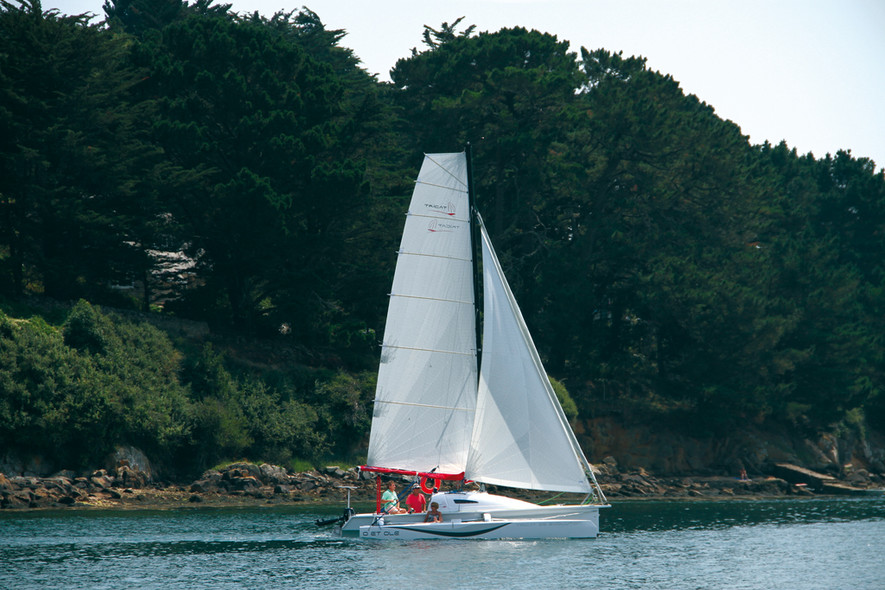
Issue #: 141
Published: May / June 2015
- Price per issue - digital : 5.40€Digital magazine
- Access to Multihulls World digital archives Digital archives
The Tricat 25, launched in 2005, was supposed to be a bit more sober, more of a cruiser than its boisterous little sister, the 22. With the new version, called Evolution, Tricat has set the bar a little higher. Antoine Houdet, the company's boss, has put an awful lot into it, as this time it's he who has designed the floats - validated by the in-house architect, Jack Michal. And not the other way round. Antoine has lost count of the number of miles he has sailed in his Tricat 25, and it was he who designed the 22, so he knows what he is talking about...
Yes, but what’s new? We find more volume in the floats, whose bows are now bevelled and inverted, crossbeams in composite, replacing the aluminum tubes – here advantage is taken of the expertise gained with the 30 – and a little more windward sail area. The mainsail’s square head is increased by 0.5m² and the genoa gains three times more. The spinnaker is also bigger. Enough modifications to put the Tricat 25 Evolution back in the game, by boosting its performance faced with the competition.
This restyling exercise will inevitably give it a second career from a commercial point of view: the builder has actually succeeded in maintaining the former price. To date, 28 examples of the 1st generation 25 have been sold, and the good news for their owners is that the sails, floats and crossbeams from the Evolution can be fitted to this first version of the new 25.
This model’s strong point is certainly its versatility. More sober than the 22, but also much more liveable, it retains great ease of transport, thanks to its folding floats. How does this work? The arms are held in place by two straps, one fixed and one free to move. The tackle which tightens the shrouds is first freed, then the moving strap’s jammer (equipped with a safety system) is opened. The forward netting is removed. Then a line is attached to the angle formed between the aft arm and the float, and pulled towards the stern. The arms are mounted on an axle and a hinge; the float comes to rest against the central hull. Folding time: less than five minutes each side. Finally, the boat in its folded configuration is 1.2m longer at 8.9m – to be allowed for, for the marina berth and transport. This configuration protects the rudder and the motor, but access to prepare for maneuvers is not easy. During the operation, the floats sink by 3cm, which optimizes the stability. We thus go from 70 liters submerged for each float, to 120.

Particularly pleasant to helm, this little trimaran accelerates in the lightest of airs.
We started the engine to move off the dock, and off we went for a few legs, to discover the Golfe du Morbihan. The helmsman has easy access to the mechanics. We attached a shackle to the first mainsail slider to hoist the little square head, unrolled the jib...and off we went! Neutral helm, imperceptible wake. Yet we were sailing close-hauled ...
What readers think
Post a comment
No comments to show.